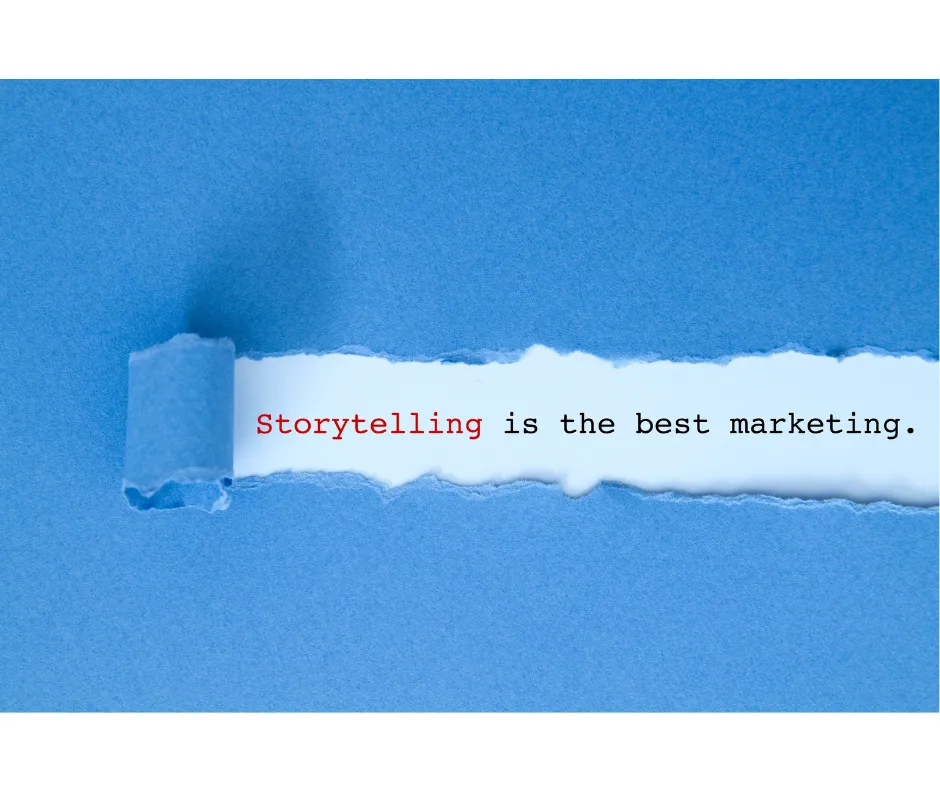“People are looking for a connection. Tell a good enough story about your brand & people will not only get invested, they’ll want to buy from you.”
John Michael Morgan
Humans are wired to connect, whether emotionally or socially. Nowadays, it is common to connect with someone with just a swipe or a request. But is a deeper connection possible?
Storytelling plays an important role in connecting with your audience – your customers or your candidates. It allows you to connect with them on an emotional level. This further helps you to build a greater level of trust & credibility.
Individuals can remember stories 22 times better than facts. This gives you a strong reason to use storytelling to make your company memorable to your candidates & improve their perception about you. A company needs a strong talent attraction storytelling strategy to engage & retain top talent. The following strategies are used by top companies for storytelling in talent management.
Storytelling – Key Strategies that Top Companies apply
Employer Brand Narratives
Companies create narratives that showcase their mission, values & culture. These stories highlight what makes the organization unique & why potential candidates should consider working there.
With the help of existing employees & new hirers, companies create a compelling story about their brand that can resonate with their potential candidates. These stories showcase what it is like to work at the company, emphasizing unique aspects that set them apart from competitors.
Company Example: Google’s narrative emphasizes innovation, employee empowerment & making a global impact, appealing to candidates who align with these values. It often talks about how they have been improving the lives of individuals with their innovations. Due to these appealing brand stories, Google has scaled their business & engaged an audience of candidates.
Employee Stories
Employee stories are a sure-fire way that companies use to make their recruitment process feel more connected to their candidates. Companies feature real-life stories of employees to provide authentic insights into the company culture & career growth opportunities.
Individuals often look for employee engagement storytelling – something they can relate to. If the story of a company’s employee relates to their circumstances, they are most likely to be attracted to the company’s values. This benefits not only the employer but also the employee as it gives them a sense of satisfaction on joining a company that they connect with.
Company Example: An employee from Philips mentioned how they cared for her when hurricane Maria hit Puerto Rico. They went all out to ensure that she & her family were doing okay & helped her relocate to the US until things got better in her hometown. This story builds up a sense of security among candidates thinking of joining Philips, knowing that they will be cared for.
Job Descriptions
Generic Job Descriptions just state the job duties whereas storytelling in talent management enables employers to connect with potential candidates on a personal level stating company culture & values. This approach helps candidates visualize themselves in the position & understand how their contributions can impact the company.
Companies paint a vivid picture of job responsibilities relating to the company’s mission instead of just bullet points. This enables candidates to envision themselves in the role.
Company Example: Airbnb’s job descriptions often include stories about the impact the role has on the company’s mission to create belonging & connection through travel.
Personalized Recruitment & Onboarding
Nearly 78% of candidates mention that the overall candidate experience is a key indicator of how a company values its individuals. During recruitment, companies use personalized HR storytelling techniques to engage with candidates, tailoring their messages to resonate with individual motivations & career aspirations.
They might share stories of successful employees or connect candidates with team members to discuss their experiences. A well-told story becomes a decisive factor in the process & leaves a mark on the potential employee’s heart.
Company Example: Apple uses personalized storytelling to connect with potential hires, showcasing how their skills can contribute to Apple’s innovation & product development. It focuses on communicating their ‘Why’ – that is the core belief of the company or why the company exists & how the employees can help by playing their part.
Leadership & Vision
Senior leaders use storytelling to communicate their vision for the company’s future & inspire employees to work towards common goals. This serves as a push to the employees to work harder to achieve the company’s objectives. These stories can be made up of individual achievements, team success or organizational achievements.
Company Example: Tesla’s CEO, Elon Musk, often uses storytelling in his communications to share his vision for sustainable energy & transportation, aligning employees with the company’s long-term objectives.
Top companies recognize the power of these corporate storytelling techniques to attract, engage & manage talent effectively by crafting compelling narratives that resonate with both potential & current employees. These stories not only highlight the company’s values & culture but also inspire individuals to become part of a larger mission.
Take the first step towards building your own compelling brand story with our experts. Visit the BlewMinds website & avail yourself of our services of storytelling for talent management.




